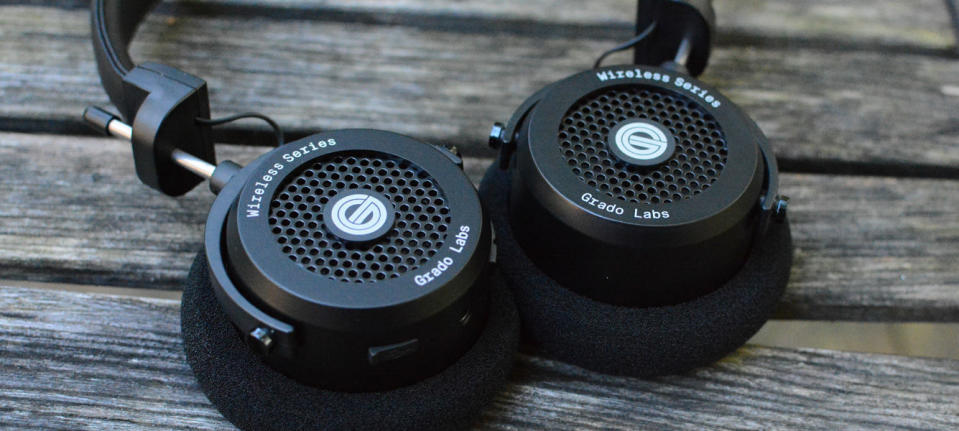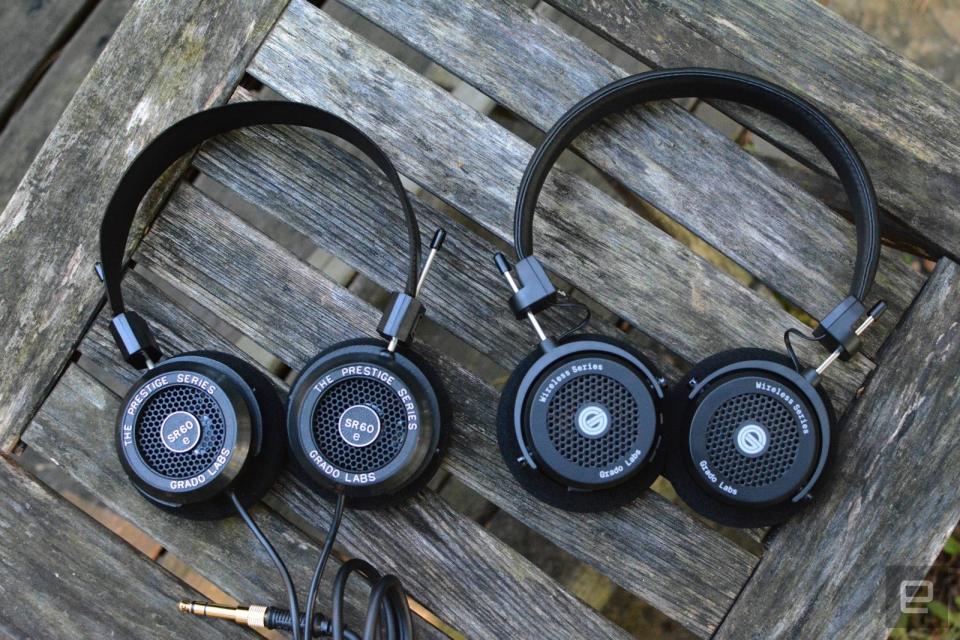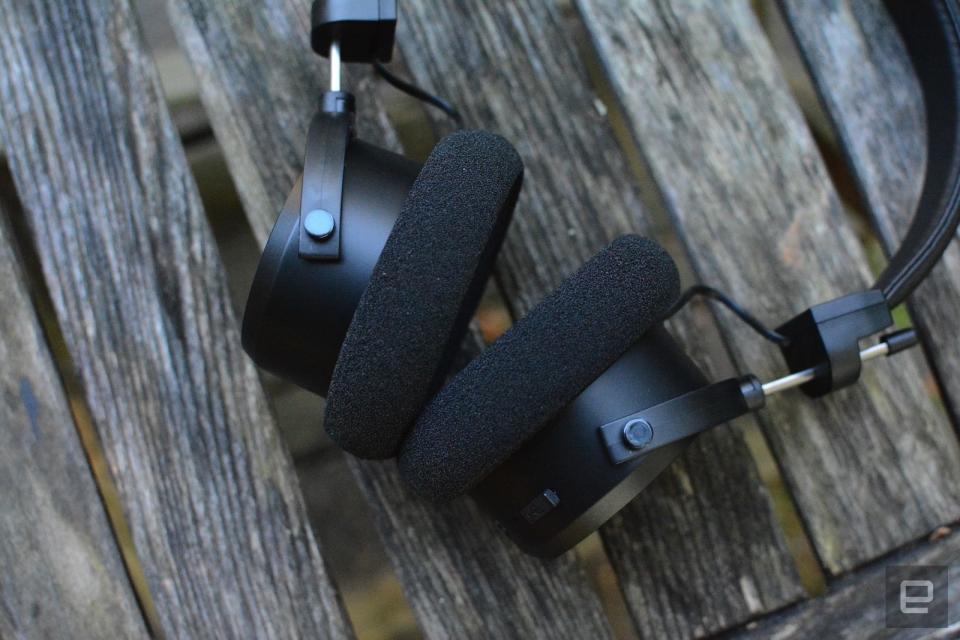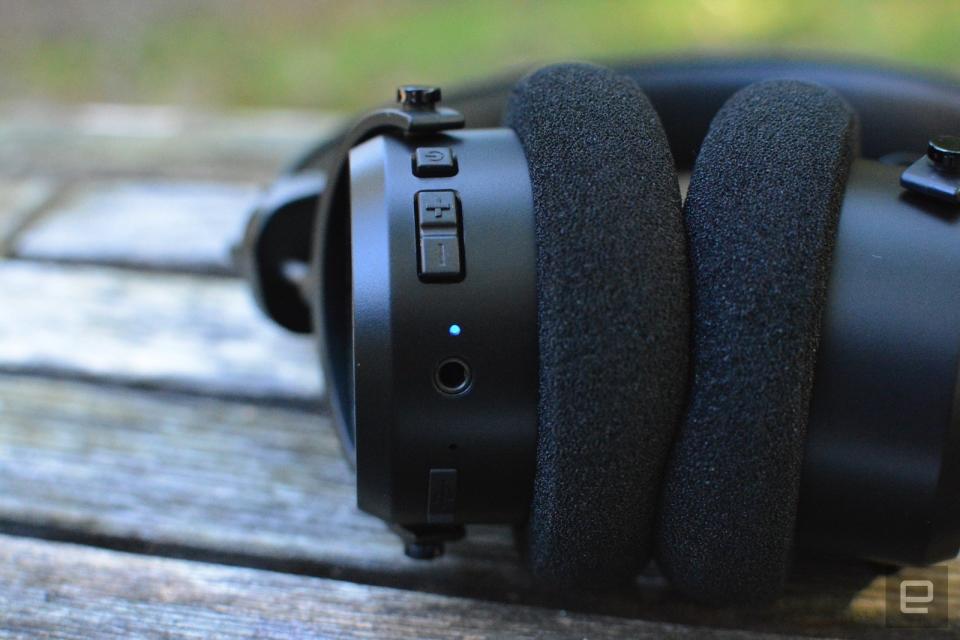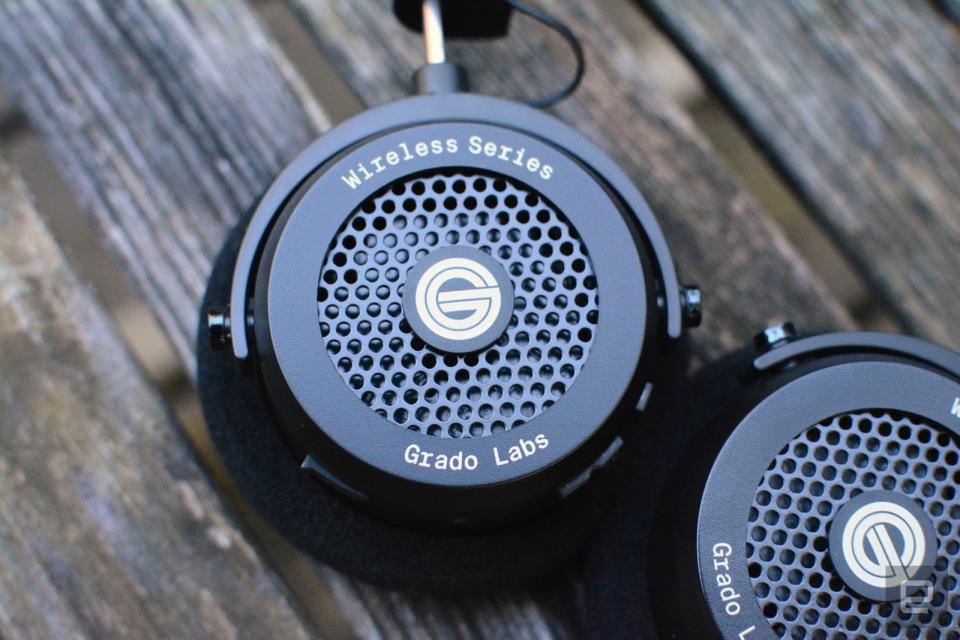Grado Labs GW100 review: A blessing and a curse
The company’s first wireless headphones offer its trademark sound with caveats.
Grado Labs was late to the wireless game. The company knows it, and it has good reasons for not jumping in sooner.
"Wireless technology has never been very good, so just like closed-back, we could make them, but people would expect them to sound like our wired headphones," John Grado told me in 2017. "And they won't."
Grado did say that the technology was improving and that the company planned to dabble in wireless soon. Fast forward to October 2018. Grado Labs announced its first wireless model: the GW100. The $249 headphones look similar to the company's Prestige Series, with a mostly black design and silver accents. What's most intriguing about the GW100, though, is not only the trademark Grado sound, but that these are supposedly the first open-back wireless headphones which can deliver great audio quality, but has its drawbacks.
Chances are you've spent most of your life listening to earbuds and closed-back headphones. Open-back headphones are quite different. There is a key benefit in that they typically exhibit a more open and airy sound -- or, to put it another way, a wider soundstage. So if you're listening to a properly mixed recording, it sounds like you're sitting at a performance. It's much more immersive than just having a song blasted directly into your ears (Radiohead, Sigur Rós and Massive Attack are some artists that do this well). By design, open-back headphones allow sound to go free from the earcups rather than isolating it, and you, from the outside world. This means that they don't block out ambient noise very well, and the people around you can hear the music when you crank the volume up.
Grado has been building open-back headphones for decades, so it makes sense the company would create the what it claims are the first wireless open-back model for its debut in the untethered world. Indeed, the design does offer a more natural-sounding, openness to the music you're listening to. It's pleasant, relaxing and highly enjoyable.

Then there's the sound leakage. To me, this is the biggest drawback of the GW100s. But in certain environments, I can live with it. While it is true the open-back design does enhance the overall sound quality, you will annoy anyone sitting within a few feet of you. In fact, I had the GW100s turned all the way up during testing, and my wife thought I was listening to music on my laptop speakers as she sat about 12 feet away.
Open-back caveat aside, the sound here is stellar. Grado Labs headphones have a natural warmth to them that have always impressed me. But you don't have to splurge for the high-end to get a piece of that -- the $79 SR60e also exhibits this trait. Ditto for the GW100 -- the sound is crisp and clear, free from any heavy-handed tuning that might tip the scales too far towards the bassy low end. It's not quite the same as what I've experienced on Grado's wired units, but it's easy to tell the apple doesn't fall far from the tree.
There's a purity to the audio here, from harmonica solos to snare drum snaps, and that clarity is present across a range of genres. Country, bluegrass, jazz and softer styles sounded best to me, but the GW100 does an admirable job with more intense hip-hop, metal and electronic music too. Without being overpowering, there's still a thump to the bass, something you can really hear on songs like CHVRCHES' "Get Out," Pusha T's "If You Know You Know" and TesseracT's "King." It's not nearly the bump you get on the likes of Beats and others, but the low end doesn't get muddy or lost when you switch from bluegrass to Big Boi.

I found myself going back to acoustic and more mellow acts with the GW100s, again, the genres I feel they handle best. I listen to a lot of bluegrass -- Punch Brothers, in particular -- and Grado's first wireless headphones handle the layered instrumentation well. Mandolin, guitar, fiddle, banjo and bass all stand on their own, complete with soaring vocals laid gently on top. Jazz albums like Miles Davis' Kind of Blue come across the same way, and are just as much a joy to listen to with the GW100s. And don't worry, there's no discernible difference in the audio if you opt for Bluetooth or wired use.
In terms of design, the GW100s have many of the same elements as Grado Labs' Prestige Series -- a line of wired headphones that ranges from $79 to $295. The earcups are black plastic shells with an open grill and recently updated Grado branding on the outside. Half-circle swivels connect the eacrups to an adjustable arm that slides up and down to help you find the right fit. The GW100's headband has a touch of padding the SR60e does not, but the earpads are a similar soft foam that's on many Grado Labs headphones. The company does have more premium-looking models (including wood shells), but the GW100 isn't one of those.

All of the business is on the left earcup. Here, the micro-USB charging port, 3.5mm jack for optional wired use, volume controls and power button all reside. The volume buttons double as track controls: short press to change the volume levels, long press to skip to the next (or previous) song. The power button can also pause the audio, put the headphones in pairing mode if it's held down, or activate your voice assistant with a double press. They're raised from the surface, so they're always easily located, and have a nice tactile clicky quality to them.
USB-C is becoming the standard on new headphones, so it's a little disappointing to not see it here, but it's far from a deal breaker. There's also a microphone on this left side to assist with calls, in addition to summoning your virtual assistant. An LED light will inform you of charging/battery status. Solid blue indicates a full charge, while flashing blue means the headphones are powered on. When charging, the GW100s show a solid red light and when it flashes red, your battery level is running low. In pairing mode, the light will alternate blue and red.
In terms of battery life, Grado Labs promises up to 15 hours on a charge. That's much less than you'll find on $300+ flagship noise-cancelling headphones. The company sets that figure with the caveat of using them at 50 percent volume, and depending on the genre you're listening to. So I was stunned when after around 15 hours, Siri indicated the GW100 was still at 50 percent. I kept the volume at around 75 percent or all the way up, and I didn't carefully select a music style. During that time, I connected to an iPhone and a MacBook Air (not at the same time), and took a couple calls -- basically a "regular" day of use for my needs. After sitting for two days, I got about three more hours out of them before I had to charge. The GW100 also has a battery-saving feature that will automatically turn the headphones off if they're on and unpaired from a device for 10 minutes.
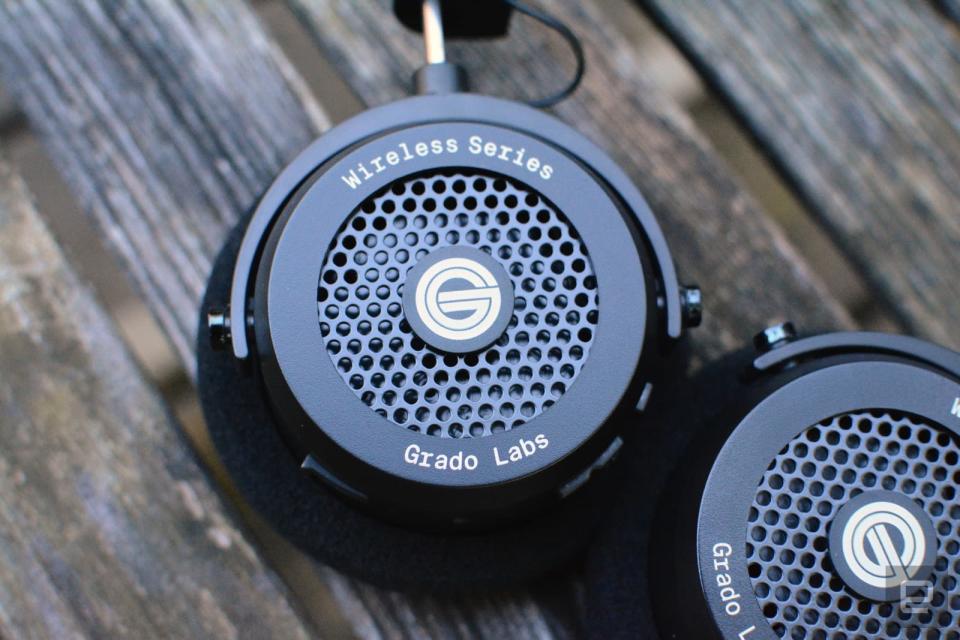
Since the open-back design on the GW100 is unique among wireless headphones, there aren't any direct comparisons. And right now, these are the only wireless option from Grado Labs. While they aren't open-back, if I was pressed to suggest an alternative, it's the Audio-Technica ATH-M50xBT. They're a wireless version of the company's popular ATH-M50x over-ear headphones. By design, you get more noise isolation here since the GW100 is an on-ear model, but there's still no active noise cancellation (ANC). The ATH-M50xBT does sound amazing though, and it offers up to 40 hours of battery life for $199. Again, it's a bit of an apples and oranges comparison.
Even though I knew it would arrive eventually, it's nice to finally get my hands on the first wireless headphones from Grado Labs. The company has a lineage of quality audio gear, and that continues with the GW100. These headphones aren't the best option for an all-around set, mostly because the open-back design is a blessing and a curse. Sound bleed aside, the audio quality is very good and the headphones have reliable connectivity alongside intuitive controls. Just don't crank them up to 11 in the confines of your quiet cubicle.

